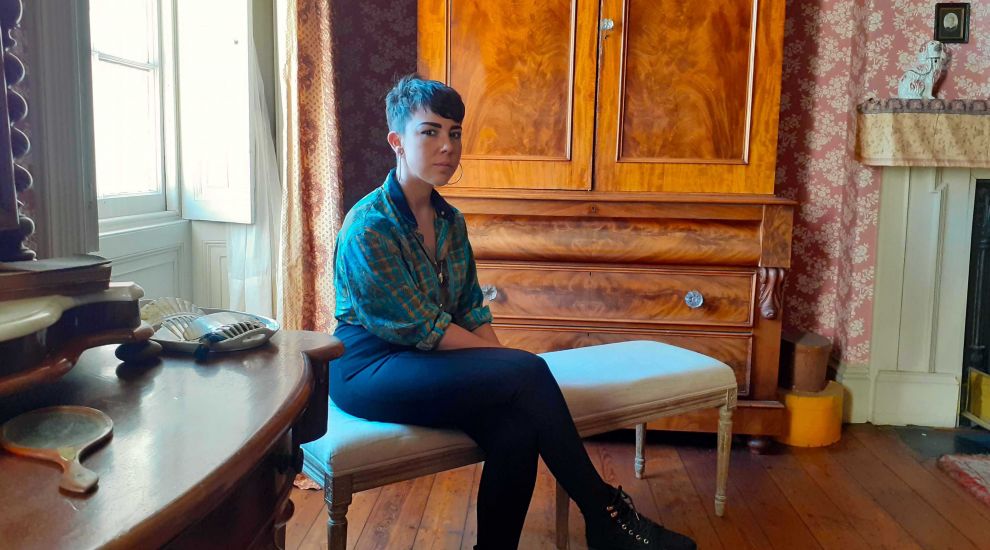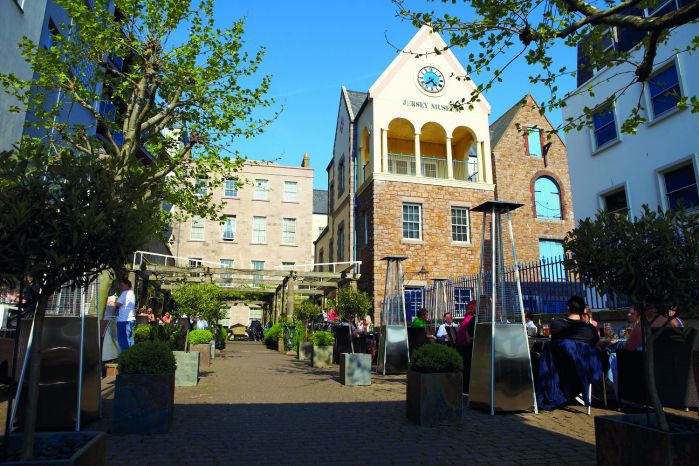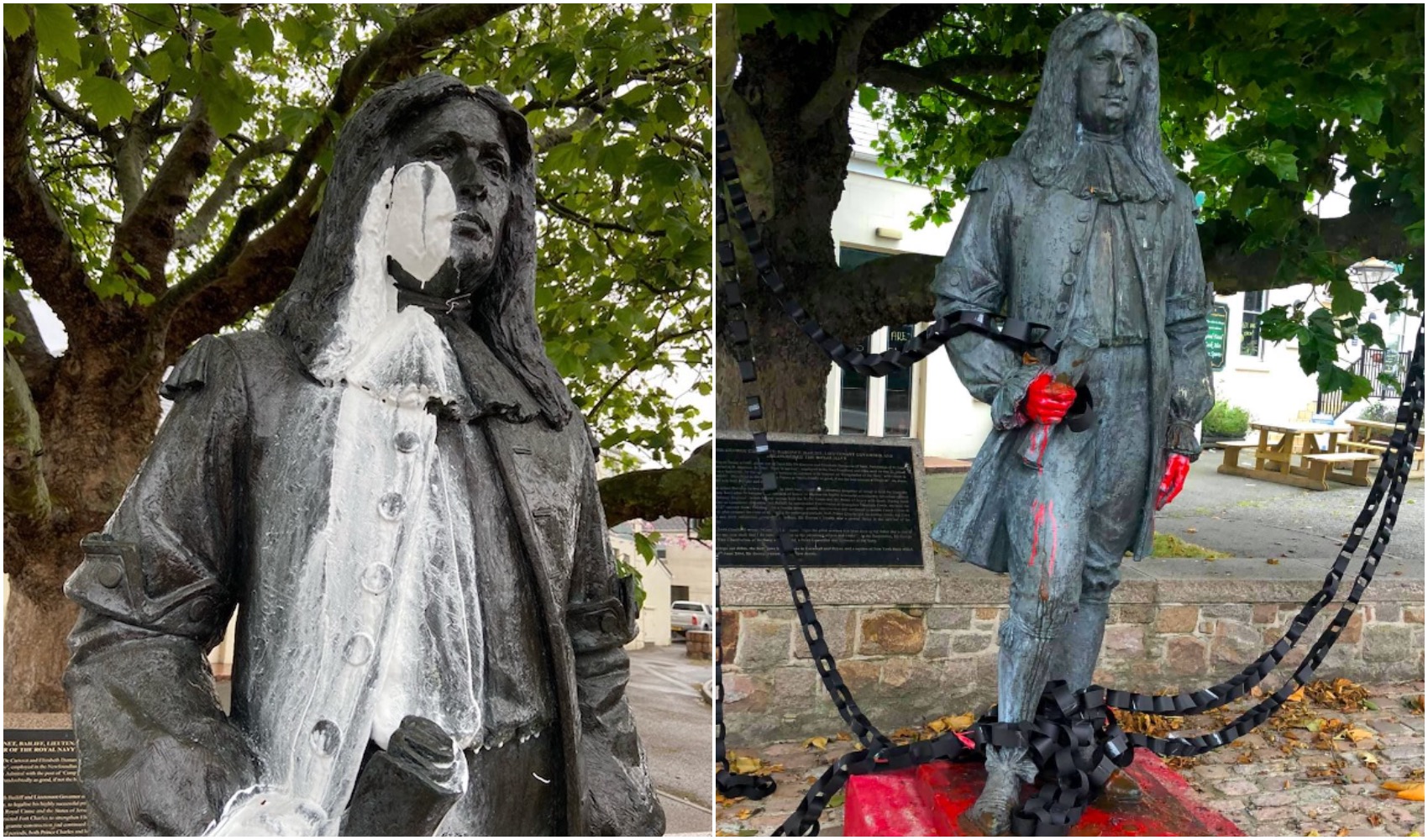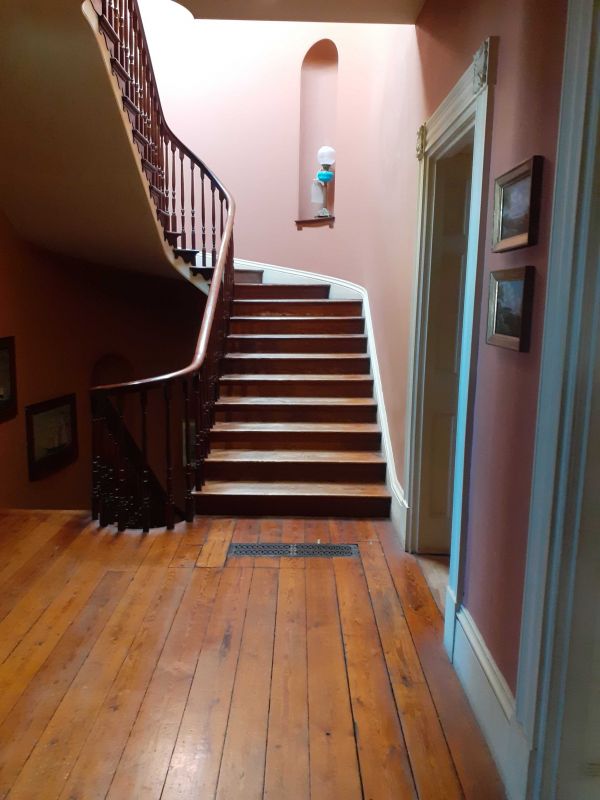


One of the jewels in Jersey Heritage’s portfolio was built using the proceeds of slavery, new research has revealed – and will be the focus of an exhibition aiming to raise awareness of the island’s connections to the transatlantic slave trade next year.
No. 9 Pier Road – formerly known as the 'Merchant’s House' – is a fully restored 19th century town house forming part of Jersey Museum.
It was built in 1818 by merchant business owner Philippe Winter Nicolle, who had inherited money from his uncle, St. John-born Josué (Joshua) Mauger, a ship owner based in Nova Scotia from where he traded in enslaved people.
The property is also filled with mahogany – ranging from its stairs and handrails to furniture – which was harvested by enslaved people.

Pictured: No 9 Pier Road, the Victorian House forming part of the Museum, was built using the proceeds of slavery.
The findings emerged in a new report published today by Jersey Heritage to coincide with Black History Month. It examines the island’s links to slavery and makes recommendations about how these links should be acknowledged.
Sparked by global conversations around racism last year, the report was put together by Director of Curation and Experience Louise Downie, following research by a community group and Heritage staff.
Jersey Heritage says it is the first in a series that will share research about previously excluded voices from the island’s history.
In addition to scrutinising its own portfolio, Jersey Heritage’s report includes a list of islanders and local businesses that made money from industries involving slavery, as well as those who directly profited from trading enslaved people.
The latter list includes New Jersey founder Sir George Carteret – founder of the Company of Royal Adventurers into Africa, which traded in enslaved people, ivory and gold – and his son. A statue of Sir George in St. Peter has previously been the focus of Black Lives Matter protests, while its sculptor said it should be moved to Jersey Museum.
Among the report’s recommendations – which were put together by the Jersey Heritage Diversity Group – is to consider whether blue information plaques can be updated to include references to slavery connections.

Pictured: Two attacks on the Sir George Carteret statue in June (left) and August (right) 2020.
One plaque acknowledging where former Lieutenant-Governor Sir Tomkyns Hilgrove Turner (1764-1843) lived, for example, does not include that he claimed compensation for 485 enslaved people in Jamaica when slavery was abolished.
Based on the group’s suggestions, Jersey Heritage has also agreed to gather more research about people who opposed the abolition of slavery in Jersey, people who opposed the rights of disadvantaged groups, any collections of human remains or items of religious or cultural significance from outside of Jersey, and those who promoted the causes of equality and inclusivity locally.
The key initiative, however, will be an exhibition based in the dining room of the Victorian House opening on 23 August 2022, International Day for the Remembrance of the Slave Trade.
It will focus on the mahogany industry, in which many Jersey businesses and families were engaged – some even had plantations in British Honduras (now Honduras and Belize).
Guest curating the exhibition will be Jersey Heritage Diversity Group Member and diversity, equality and inclusion specialist Jade Ecobichon-Gray (pictured top).
“As a Jersey-born, mixed-race woman of Black and White heritage, the decision to create an exhibition dedicated to exploring Jersey's links to the slave trade represents a move towards a more authentic, inclusive and representative history,” she said.

Pictured: The exhibition - guest curated by Ms Ecobichon-Gray - will explore slavery within the trade of mahogany, which can be found in many areas of the No 9 Pier Road.
“For too long, communities experiencing racial inequality have been marginalised or excluded from the history books and in telling the whole story of history through this exhibition, I hope that it promotes a greater understanding of the ways in which racial inequality continues to permeate our systems, structures and society today.”
She added: “Whilst it was incredibly difficult to research the lives of so many men, women and children forced into chattel slavery as part of the transatlantic slave trade, particularly as my ancestors were themselves enslaved in the Caribbean, it has brought with it a deeper, nuanced and more honest connection with the Island I call home, and my hopes for its future.”
Diversity group member Vic Tanner-Davy, CEO of equality charity Liberate, said the research uncovered that “Jersey was not a bystander in the [slave trade], as has often been suggested, it was active in it.”
“For a White audience, the fact that an exhibition tackles a subject that makes us feel discomfort, shock or guilt should not deter us from learning more about how Jersey profited from the traffic in human beings. As individuals, learning about and acknowledging the whole of Jersey’s history is the best and only way we can now make reparation for the atrocities that enriched our Island and understand why that history continues to touch the lives of the 2,000 Black and mixed race people who live in Jersey today.”
Louise Downie said that the report was about “looking deep into the past and seeing how it impacts on our culture today.”
“We can’t change the past but history is something that is written every day. The Occupation is an example of this. Names such as “Dorothea Le Brocq” are known today because over the past few years, the island has confronted its past and learnt more about the Occupation to understand it, challenge it and move forward. New stories about people, such as Dorothea, who hid her Jewish friend, Hedwig Bercu, from German forces, have emerged as a result. We hope the same impact can be made on other aspects of Jersey’s shared past, starting with its connections to the transatlantic slave trade.”
Vice-Chair of Jersey Heritage Trust and member of the board Nancy Thomas thanked everyone involved in the “essential” diversity audit, adding: “We have listened and learned, and will continue to do so.
“The report rightly concludes that Jersey Heritage has a responsibility to ensure that its interpretation is equal, inclusive and accessible and that we should play a part in educating about our shared past for the benefit of the community.”
Express sat down with Jade Ecobichon-Gray to talk about Jersey's links with slavery...
Follow Bailiwick Podcasts on Spotify, Apple Podcasts, Deezer or Whooshkaa.
Read Express tomorrow for an in-depth analysis of the report...
Comments
Comments on this story express the views of the commentator only, not Bailiwick Publishing. We are unable to guarantee the accuracy of any of those comments.